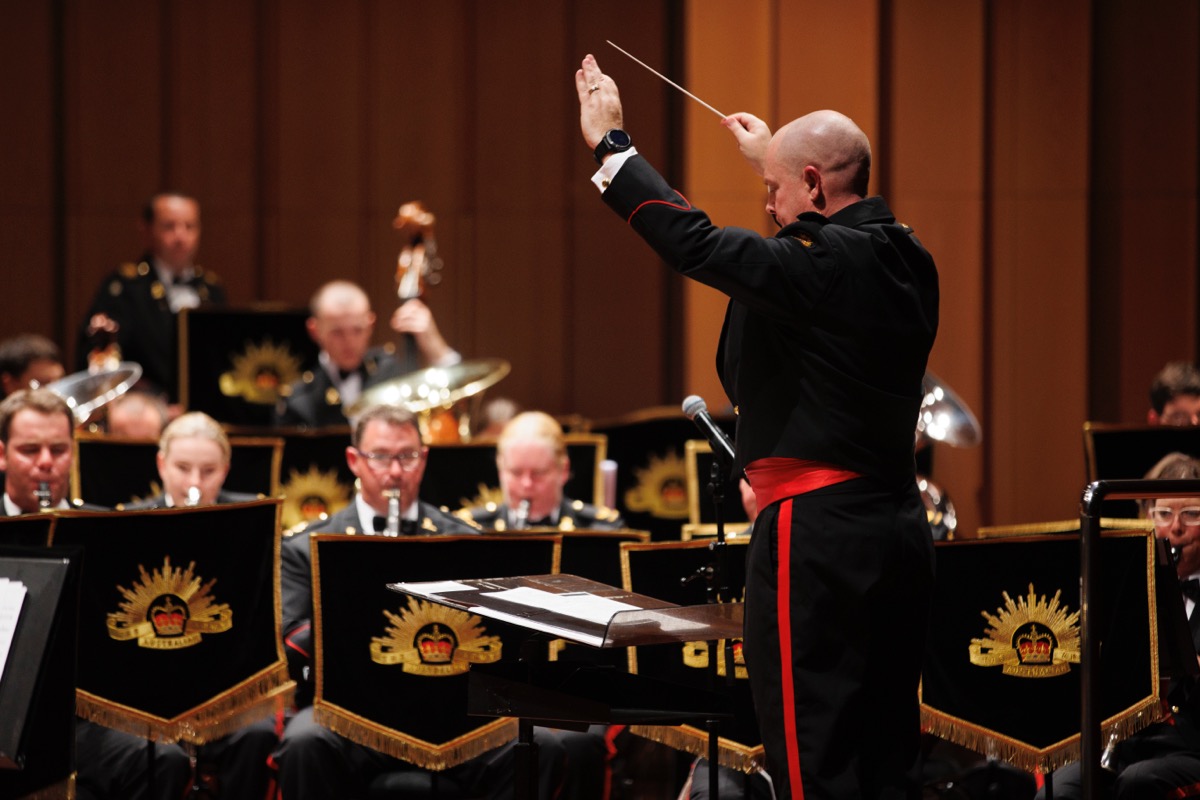
Music / Band of the Royal Military College. At Llewellyn Hall, October 1. Reviewed by JAYDEN LOHE.
FOR two hours on Saturday evening, Llewellyn Hall was filled with the mighty sound of the Band of the Royal Military College (RMC) in the second concert of its series titled “Masterworks for Winds”.
Presenting a variety of often programmatic and mostly contemporary works, the ensemble, consisting of woodwind and brass instruments, played evocatively and took the audience on a journey with them as the music explored different characters, landscapes, and atmospheres.
The band, conducted by Maj. Matt O’Keeffe, is the official ensemble of the Royal Military College, Duntroon, and performs frequently for official government ceremonies as well as for community events.
The concert was delivered in partnership with the Australian National University (ANU), with the RMC Band complemented by students from the ANU’s School of Music for fundraising with proceeds from the concert going to Legacy, an organisation that assists the families of veterans experiencing hardship.
The concert opened with a 2014 work by American composer Alyssa Morris titled “Cryptids”. Maj. O’Keeffe explained that cryptid is a mythological creature often referred to in folklore, and Morris’ work was in three movements, each depicting a well-known cryptid – the North American “Bigfoot”, the Scottish Loch Ness Monster, and the Himalayan “Abominable Snow Monster”
The band conveyed the character of each cryptid well, in particular “Bigfoot” due to the strength of sound from the lower brass, and “Loch Ness”, where it was easy to imagine such a monster emerging from the water.
Two more pieces followed before the interval – “Twist” by Australian composer and ANU graduate Jodie Blackshaw, and “Lincolnshire Posy” by 20th century Australian composer Percy Grainger.
“Twist” was an evocative work inspired by the stories and landscape associated with the Murray River, before and post-European colonisation. The work required instrumental techniques to imitate the sounds of birds such as kookaburras and birdsong, and it was evident that the audience was captivated by the vivid interpretation by the band.
The six-movement piece began by depicting a violent story from the indigenous Dreamtime, before transitioning smoothly to depicting the calm and flow of the river with a snaking flute solo, but this was, unfortunately, one of the areas where the wind instruments such as flutes, clarinets and oboes were sometimes overpowered by other instruments.
“Lincolnshire Posy” was also a six-movement work, which depicted Grainger’s adaptations of folk songs he heard while in Lincolnshire, England, in 1905-1906. Some of the movements were almost hymn-like, and the band’s masterful intonation and balance was evident, as were the sweet and melodic piccolo solos.
After the interval, the RMC Band returned with the final work in the program: Symphony No.2 “The Big Apple” by contemporary Dutch composer Johan de Meij. This substantial work was written as a quasi-musical interpretation of New York, depicting its lively, busting nature no matter the time of day. It was a piece that always pressed forwards, driven by the band’s percussion section who played with energy and vitality throughout. There was never a moment of stagnation, and it was a testament to the band that it retained the excitement, crispness, and forward motion throughout the relentless 35-minute piece.
It was a joy to hear the sound of a band playing so expressively and with a sense of unity and camaraderie, and the concert was a reminder of how lucky we Canberrans are to be in the same city as the RMC Band.
Who can be trusted?
In a world of spin and confusion, there’s never been a more important time to support independent journalism in Canberra.
If you trust our work online and want to enforce the power of independent voices, I invite you to make a small contribution.
Every dollar of support is invested back into our journalism to help keep citynews.com.au strong and free.
Thank you,
Ian Meikle, editor








Leave a Reply